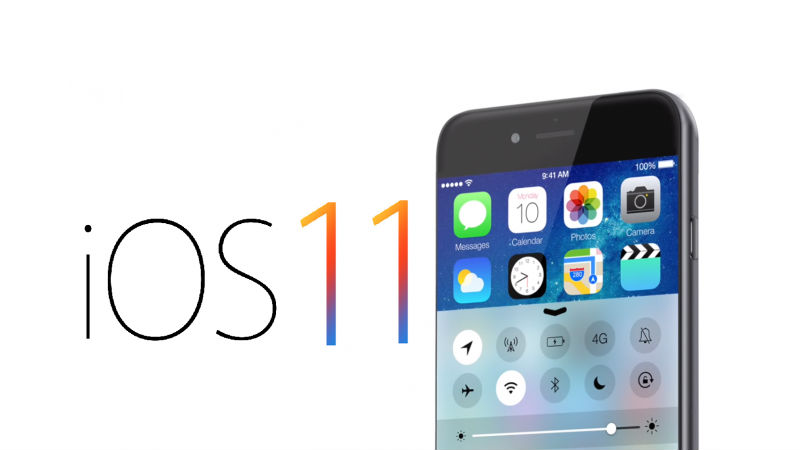Xamarin release preview edition with iOS11 and Xcode 9 Compatibility
Xamarin today halve a released a preview build for those that have been hankering (since about 2 hours after the WWDC keynote according to some forum posts I’ve picked up on!) to play with Apple’s new goodness.

Specifically this let’s you play with Xcode 9, iOS 11 and MacOS 10.13. If you don’t have Xcode 9 installed already I highly recommend you follow the Dev Centre instructions that allow you to install it in parallel, don’t grumble at me if you can’t get any real work done once you’ve finished playing!
(Via.)
Preview: Xcode 9 beta 3, iOS 11, macOS 10.13 support – Preview 1 | Xamarin Releases: “”
BTServer causing high CPU utilization (When wake from Sleep)
Symptoms are that your Mac wakes from sleep and CPU usage spikes to 100%, Activity Monitor show’s it the BTServer process using it all and you have to quit it. This happens, 100% reproducible, when you’ve used the iOS Simulator at some point since the last reboot.
This isn’t a perfect solution, in fact it’s ruddy useless of the iPhone / iPad app you’re developing uses Bluetooth, but if it doesn’t then you can get away without BTServer, so we disable it.
Thanks to ‘Frankie’ via the Apple Support Forums
Re: BTServer causing high CPU utilization
Mar 4, 2012 5:51 AM (in response to Ryan Homer)
I have the same issue. My mac is 10.6.8 and I’m using XCode 4.2.
Just try:
Go to the Macintosh HD > Developer > Platforms > iPhoneSimulator.platform > Developer > SDKs > iPhoneSimulator5.0.sdk > System > Library > LaunchDaemons directory and then open the plist file from there. Locate the “Disabled” key and change its value from “NO” to “YES”.
You need to change permission in the file and also its parent folder in order to save the new permission of plist file before modifying in XCode.
Hope this help.
Frankie
via BTServer causing high CPU utilization: Apple Support Communities.
Andy Flisher is a Software Developer based in the North East of England specialising in cross platform development. Mobile Development experience includes Windows Phone, Android, and iPhone Apps. Desktop Software Development includes bespoke Windows, Linux, and Mac Applications. Web Development Skills include PHP, Perl, Python, ASP (Classic and .NET) – Andy Flisher on Google+
I Found This Useful: Error message in OSX Console – Cant create kext cache under / – owner not root
Error message in OSX Console – Cant create kext cache under / – owner not root
I was getting an error in the console:
com.apple.kextd[10]: Cant create kext cache under / - owner not root
This can be fixed by doing the following command:
sudo chown root:admin /
Note, you will almost certainly be prompted for a password, normally this is your Mac login password, but it may be a specific user with Administrator privileges’ password you need to enter
via I Found This Useful: Error message in OSX Console – Cant create kext cache under / – owner not root.
Andy Flisher is a Software Developer based in the North East of England specialising in cross platform development. Mobile Development experience includes Windows Phone, Android, and iPhone Apps. Desktop Software Development includes bespoke Windows, Linux, and Mac Applications. Web Development Skills include PHP, Perl, Python, ASP (Classic and .NET) – Andy Flisher on Google+
Monitor Wi-Fi with Lion’s hidden tool | Macworld
Monitor Wi-Fi with Lion’s hidden tool
by Lex Friedman, Macworld.com Sep 5, 2011 2:00 pm
Hints reader nathanator11 discovered that Lion includes a handy app that provides all sorts of diagnostic information surrounding your wireless network. Much of the information the software generates gets pretty technical, but even Wi-Fi novices may find some of the details that the utility aggregates useful.
Wi-Fi Diagnostics is tucked away in the /System/Library/CoreServices folder. To get there, I pressed Shift-Command-G in the Finder (the equivalent of going to the Go menu and choosing Go to Folder), and then typed in the /System/Library/CoreServices path and pressed Return. Once in the folder, I found Wi-Fi Diagnostics and double-clicked it. Alternatively, you could launch the Terminal and type open “/System/Library/CoreServices/Wi-Fi Diagnostics.app”, and then press Return.
However you find and launch it, Wi-Fi Diagnostics gives you four options: Monitor Performance (which shows you signal strength, noise level, transmit power, and data rate); Record Events (which can keep a log of network happenings); Capture Raw Frames (which records everything coming and going on your Mac’s wireless connection); and Turn on Debug Logs.
If you’re at all interested in what’s going on with your Mac’s Wi-Fi connection or your wireless network, Wi-Fi Diagnostics is freely included with your copy of Lion, and you can’t break anything by poking around the app—so enjoy!
via Monitor Wi-Fi with Lion’s hidden tool | Networking & Wireless | Mac OS X Hints | Macworld.
Andy Flisher is a Software Developer based in the North East of England specialising in cross platform development. Mobile Development experience includes Windows Phone, Android, and iPhone Apps. Desktop Software Development includes bespoke Windows, Linux, and Mac Applications. Web Development Skills include PHP, Perl, Python, ASP (Classic and .NET) – Andy Flisher on Google+
iOS 5 Beta 2 has bricked my iPhone – Updated
Updated 28/6/2011 – See below for a solution to avoid bricking in the first place
And I’ve just bricked my pants, thankfully I think as I type (gives me something to do as I wait the process out), there is a solution.
I was already running iOS 5 on a non jailbroken iPhone 4, legit route (am a registered developer so downloaded and updated via xcode etc), all good, got to the ‘Waiting for Iphone’ message, and stayed there. So I waited, and waited, but nothing.
Screen was black, so went to power on, and nothing, holding down power and home button, nothing, not a glimmer, one dead iphone. Bricked.
On a whim I killed Xcode and fired up iTunes, and a glimmer of hope, a dialogue box appears, we have detected in restore mode, still nothing on the screen, no connect to itunes diagrams, but still, who am I to argue, if you can see my iphone I’ll work with it.
Clicking through the process it offered me iOS 4.3 as the last ‘released’ version, so I cancelled out, Alt+Clicked the Restore button and browsed to the v5 beta 2 .ipsw file, and waited, and am still waiting, but it’s restoring and as I type there’s an Apple logo and a progress bar on the screen so something’s alive.
Looking about I did find this link (Apple Dev forums so needs a Dev logon I think) Iphone 3gs dead after IOS 5 beta2 update which pretty much echoes my process, and I can verify the success now as iTunes is offering to restore from backup, and the phone is showing the new activation screen.
Phew, I think, and thanks Apple, that was seamless.
Caveat: Apple warn you not to install Developer releases on your primary / sole device, but I know best, blah, blah, yes, all my fault if it goes wrong I know 🙁
Update: Have installed iOS 5 Beta 2 on 3 Devices now, first two I did normally via Xcode and both showed bricked symptomks of an entirely black screen and lifeless after Xcode finished restoring. Thankfully both came back to life by re-restoring through iTunes as per above.
The third I’ve learnt from (only 2 failures to learn, I’m getting there!), plugged device into Xcode and clicked the ‘Use for Development’ link in Organiser (it was a new device and UUID so necessary) and let it install the debug symbols etc. And then quit out, into iTunes and immediately Alt+Clicked Restore, browsed to the firmware and off we go, basically bypassing the wasted and aborted Xcode restore process. All good, and straight into the new Activation process after a reboot.
Andy Flisher is a Software Developer based in the North East of England specialising in cross platform development. Mobile Development experience includes Windows Phone, Android, and iPhone Apps. Desktop Software Development includes bespoke Windows, Linux, and Mac Applications. Web Development Skills include PHP, Perl, Python, ASP (Classic and .NET) – Andy Flisher on Google+
Mac Appstore exit code: 173 issues
I just love an IT issue where I’m almost the only one that has it, means no fix, and a small group of people tearing hair out (thankfully I have none). Well my issue c/o the new shiny Mac App Store is purchased apps dieing with nothing more than an ‘exit code: 173’ logged, which seems to be part of the DRM / copy protection process. Shame is they’re legitimate purchases!
[···]
